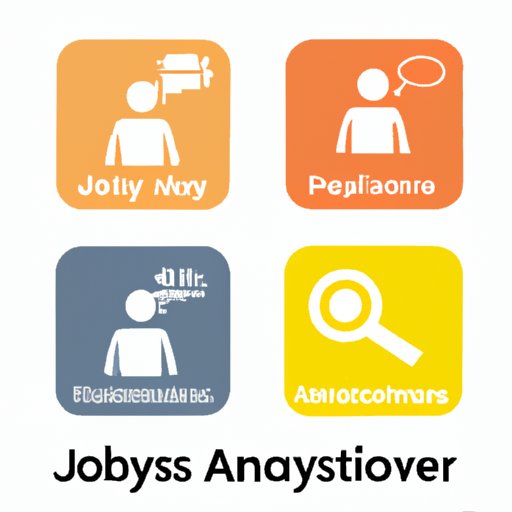
Introduction
If you’re looking to fill a position within your organization, you’ve likely heard the term “job analysis” mentioned at least once or twice. But what exactly is job analysis, and why is it so important? In today’s competitive job market, having a thorough understanding of what a job entails and what skills and competencies are required for success is crucial. In this article, we’ll explore the ins and outs of job analysis, including its purpose, benefits, and how to conduct one effectively.
Understanding the Basics of Job Analysis: A Comprehensive Overview
At its core, job analysis is the process of gathering information about a particular job in order to understand its duties, responsibilities, and requirements. This information can come from a variety of sources, including interviews with current or past employees, observations of job tasks, or surveys of other professionals in the industry.
The purpose of job analysis is to provide a clear and accurate picture of what a job entails, including the specific tasks that are required, as well as the knowledge, skills, and abilities needed to perform those tasks effectively. This information can then be used to guide a variety of HR functions, including recruiting, performance evaluation, and training.
The Importance of Job Analysis in Today’s Competitive Job Market
In today’s competitive job market, having a thorough understanding of what a job entails is crucial for attracting and retaining the best talent. Job analysis can help organizations stay competitive by identifying the key skills and competencies needed for success and creating job postings and hiring criteria that attract the right candidates.
For example, healthcare organizations can use job analysis to identify specific competencies needed for roles such as nursing or medical administration. Similarly, technology companies can use job analysis to identify the skills and competencies needed for roles such as software development or cybersecurity.
How to Conduct a Job Analysis: Step-by-Step Guide for HR Professionals
Conducting a job analysis involves several key steps, including conducting interviews with current or past employees, analyzing job tasks and responsibilities, and creating competency models that outline the necessary skills and knowledge required for success in the role.
To conduct an effective job analysis, it’s important for HR professionals to get buy-in from key stakeholders, including managers and employees. They should also ensure that the process is efficient and effective by using tools such as questionnaires and software programs designed specifically for job analysis.
The Role of Job Analysis in Employee Training and Development
In addition to informing the recruiting and hiring process, job analysis can also play a critical role in employee training and development. By identifying skill gaps and areas for improvement through job analysis, organizations can create targeted training programs and performance management systems that help employees develop the skills and knowledge necessary for success in their roles.
For example, a manufacturing company may use job analysis to identify areas of improvement for its assembly line workers, then develop a training program focused specifically on those areas. Similarly, a marketing firm may use job analysis to identify specific competencies needed for roles such as digital marketing or content creation, then create training and development programs designed to support those competencies.
Job Analysis: A Key Tool for Creating Effective Job Descriptions
Job analysis can also be a powerful tool for creating accurate and detailed job descriptions. By understanding the specific tasks and responsibilities required for a particular role, HR professionals can create job descriptions that accurately reflect the expectations for that role and help to attract and retain the best talent.
In addition, job descriptions based on job analysis can improve organizational structure and employee performance by clarifying expectations and providing a clear roadmap for success in the role.
Job Analysis vs. Job Evaluation: Understanding the Differences
While job analysis and job evaluation are often used interchangeably, they are actually two distinct processes. Job analysis focuses on understanding the specific duties and responsibilities of a particular job, while job evaluation evaluates the relative worth of different jobs within an organization.
Both job analysis and job evaluation are important tools for organizations, and they complement each other by providing a comprehensive understanding of the jobs within an organization and how they fit together.
Common Mistakes to Avoid When Conducting a Job Analysis
Despite the importance of job analysis, there are several common mistakes that HR professionals may encounter when conducting a job analysis. These include relying on outdated job descriptions, not involving key stakeholders such as managers and employees, and failing to use the right tools and resources for the job.
To avoid these mistakes, it’s important for HR professionals to take a systematic approach to job analysis, including clearly defining the job under analysis, gathering data from multiple sources, and involving key stakeholders in the process.
Conclusion
Job analysis is a critical tool for organizations in today’s competitive job market. By providing a comprehensive understanding of the specific duties, responsibilities, and requirements of a particular job, job analysis can help organizations attract and retain the best talent, create effective training and development programs, and improve overall organizational performance.
Whether you’re an HR professional conducting a job analysis or a hiring manager looking to fill a position within your organization, the information in this article can help you better understand the job analysis process and its benefits. By taking a systematic and thoughtful approach to job analysis, you can help ensure the success of your organization and its employees.




